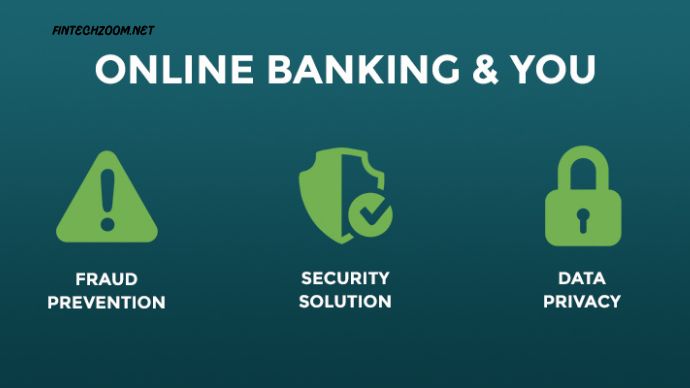In the fast-evolving landscape of finance, the question of “How technology is making online banking safer” is paramount. As we delve into the nuances of digital financial transactions, the strides in technological advancements are becoming the bedrock of secure banking practices.
Definition of Online Banking
Online banking, a digital leap in financial services, refers to the ability to access banking services over the internet. This includes managing accounts, conducting transactions, and accessing information, all from the comfort of one’s device.
Evolution of Online Banking
The evolution of online banking has been remarkable. From basic transactions to comprehensive financial management, technology has played a pivotal role in shaping the modern banking experience.
Importance of Security
Security stands as the linchpin in the world of online banking. The increasing importance of safeguarding sensitive financial information has driven innovations to fortify the digital fortress.
Advanced Encryption
SSL/TLS Protocols
Securing online transactions begins with robust encryption protocols. SSL/TLS protocols create a secure communication channel, safeguarding data from potential breaches.
Two-Factor Authentication
Adding an extra layer of defense, two-factor authentication ensures that access to accounts requires not only a password but also a secondary verification method, enhancing overall security.
Biometric Security
Biometric security, using fingerprints or facial recognition, adds a personalized touch to authentication, making it harder for unauthorized users to gain access.
Secure Mobile Apps
Real-Time Fraud Monitoring
Mobile banking apps now incorporate real-time fraud monitoring, instantly flagging suspicious activities and preventing unauthorized transactions.
Machine Learning Algorithms
Machine learning algorithms analyze user behavior patterns, identifying anomalies and proactively preventing fraudulent activities.
Anti-Phishing Measures
In the battle against phishing attacks, advanced mobile apps come equipped with anti-phishing measures, protecting users from falling victim to deceptive schemes.
Risk Management Systems
Transaction Verification
Sophisticated risk management systems verify transactions, ensuring that each financial activity aligns with the user’s behavior and prevents fraudulent actions.
Customer Education Initiatives
Educating customers on potential risks and safe online practices forms a crucial part of risk management, empowering users to make informed decisions.
Regulatory Compliance
Adhering to stringent regulatory standards is imperative. Online banking platforms actively ensure compliance with industry regulations, further enhancing security measures.
Cybersecurity Partnerships
Collaborations with Financial Institutions
Collaborations between online banking platforms and financial institutions create a unified front against cyber threats, fostering a secure financial ecosystem.
Government Regulations
Stringent government regulations provide a framework for secure online transactions, setting standards that protect users and promote responsible banking practices.
Industry Standards
Adherence to industry standards ensures that online banking platforms meet the highest benchmarks of security, creating a trustworthy environment for users.
User-Friendly Security
Simplifying Complex Security Measures
Balancing security with user-friendliness, online banking platforms strive to simplify complex security measures, ensuring accessibility without compromising safety.
Customer Feedback Integration
Continuous improvement is fueled by customer feedback. Online banking platforms actively integrate user insights to enhance security features based on real-world experiences.
Case Studies
Successful Implementations
Examining successful case studies showcases how the integration of advanced technologies has led to a significant reduction in fraudulent activities.
Positive Impact on Fraud Reduction
Real-world examples highlight the positive impact of technology on reducing fraud, instilling confidence in users and stakeholders alike.
User Testimonials
User testimonials serve as a testament to the efficacy of these security measures, providing a human touch to the technological advancements.
Future Trends
Emerging Technologies
Exploring future trends unveils emerging technologies set to redefine online banking security, including artificial intelligence and blockchain.
Artificial Intelligence in Banking
Artificial intelligence is poised to play a pivotal role in predictive security, preemptively identifying potential threats before they manifest.
Blockchain for Security
The implementation of blockchain technology enhances security by creating an immutable ledger, reducing the risk of data manipulation and fraud.
Challenges and Solutions
Balancing Convenience and Security
The ongoing challenge lies in striking the right balance between providing a convenient user experience and maintaining stringent security measures.
Adapting to Evolving Threats
The ever-evolving nature of cyber threats requires constant adaptation. Online banking platforms remain vigilant, staying ahead of potential risks.
Cybersecurity Training for Customers
Empowering customers through cybersecurity training ensures that users are well-equipped to navigate the digital landscape safely.
FAQs
1. How does Two-Factor Authentication Work?
Two-Factor Authentication (2FA) adds an extra layer of security by requiring two forms of identification before granting access. Typically, it involves something you know (like a password) and something you have (like a mobile device or security token). This dual verification significantly enhances account protection.
2. Are Mobile Banking Apps Safe?
Yes, modern mobile banking apps are designed with robust security features. They use encryption, secure data transmission protocols, and real-time fraud monitoring. Always download official apps from trusted sources and keep them updated to ensure the latest security patches are in place.
3. How Often Should I Update My Password?
Regularly updating your password is a good security practice. Aim to change it every three to six months. Additionally, update your password immediately if you suspect any unauthorized access or if you receive security alerts from your online banking platform.
4. What Should I Do If I Suspect Fraudulent Activity?
If you notice any suspicious transactions or activities in your online banking account, act promptly. Contact your bank’s customer support, report the incident, and follow their instructions. Most banks have dedicated channels to address fraud concerns and can assist in securing your account.
5. Can Artificial Intelligence Really Enhance Online Banking Security?
Absolutely. Artificial Intelligence (AI) plays a crucial role in identifying patterns and anomalies in user behavior. It can detect and prevent potential threats in real-time, offering a proactive approach to security. As AI continues to evolve, its contribution to online banking safety is expected to grow significantly.
Conclusion
the transformative impact of technology on online banking safety is undeniable. From advanced encryption to future trends, each facet contributes to a more secure financial landscape. Embracing these innovations, coupled with user awareness, ensures a safer and more reliable online banking experience.

